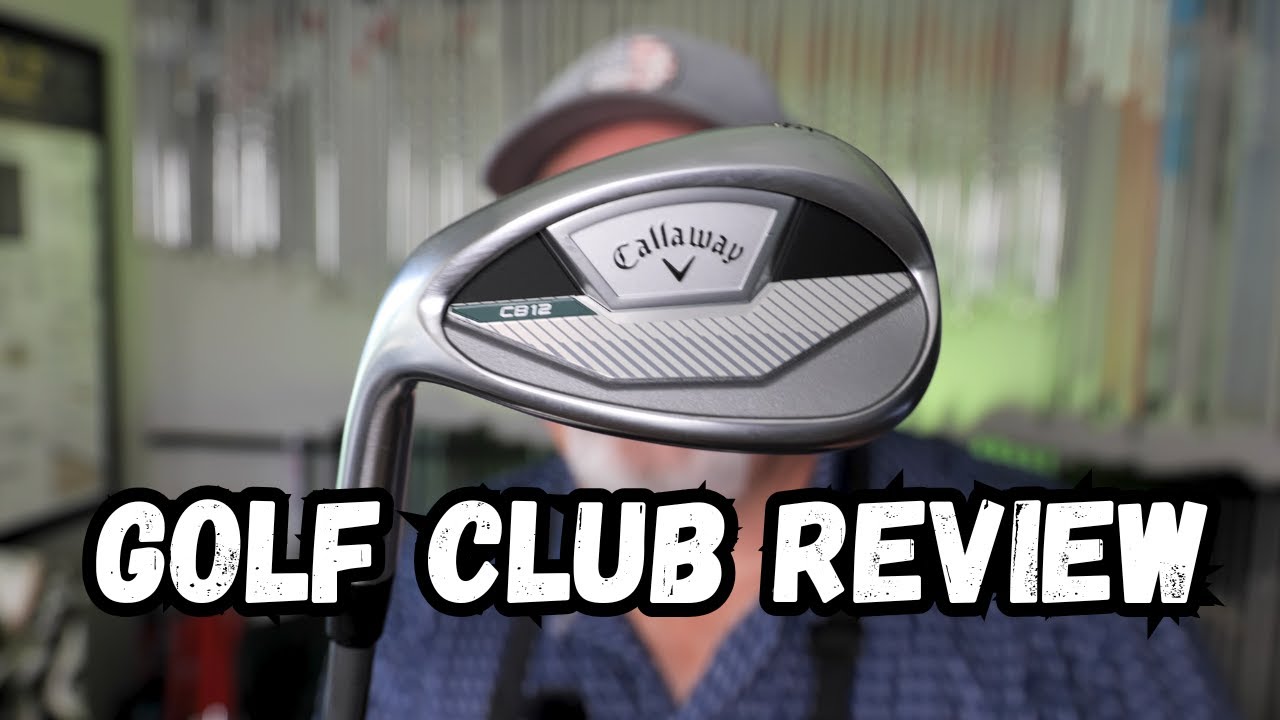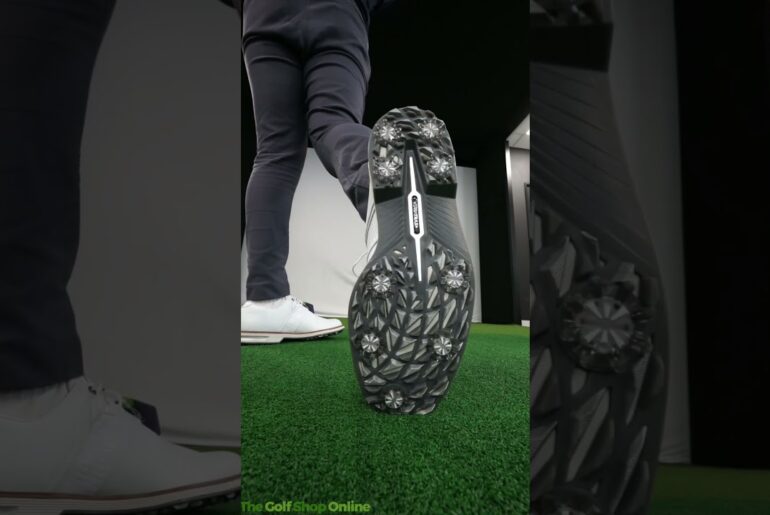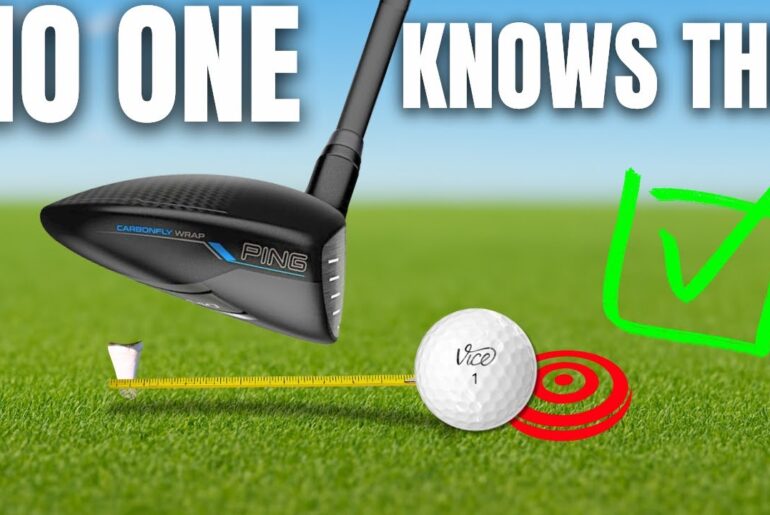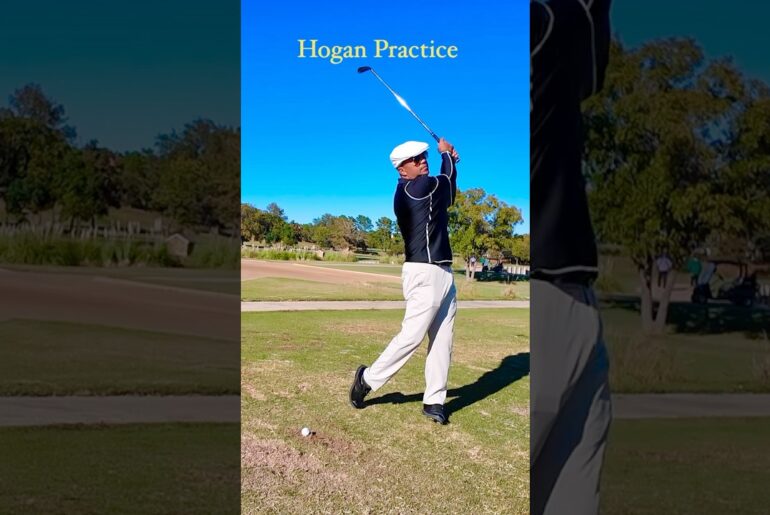Callaway released the CB12 wedge.
Today we are checking out the new CB12 Trisole wedge, and testing it both inside on the flightscope X3 and outside on the grass. We will be comparing the results from Launch Monitor to the real world. Let’s see how this new golf club performs!
Join us on Mondays 1730 or 530 pm eastern for our live stream, What in My Drawers golf Talk.
We have a new wedge to check. We’re going to do it inside and outside. Let’s stay tuned for that. Welcome back to Me Golf Shop. Jimmy Clary here and this is me golf channel. We talk about golf club repairs, golf club reviews, and golf club fittings. All so your scores can go low. If you would like, subscribe. That way a lot of this stuff gets out to YouTube universe. Okay. And we also do a live stream. And the live stream is on Mondays, 17:30 or 5:30 p.m. Eastern time. It’s the same exact stuff that we talk about on the channel. It’s just live between you and I. It’s real time. Goes about an hour to an hour and a half depending on the amount of questions. Join us. You will like it. Okay. All right. Callaway has released a CB12 wedge. All right. The CB12 wedge is the upgraded version of their Let’s see if this will pick that up or not. There we go. Is the CB12. I’m kind of far away. It’s a little different atmosphere because we are going to test it on the monitor. And the CB12 is basically an updated version of the CB wedge in that there’s a lot of weight that goes around the perimeter of the club to make it more stable. You also find out that it has a very wide sole when you first look at it. However, it has a trio, meaning that the leading edge has been cut down, the trailing edge has been cut down. So, the actual part integrating with the turf is truly not that wide. All right. In addition to that, they also have higher bounce options. They have a 50 and a 52 that are in 12. They have a 54, 56 that are in 14. And then they have a 58 and a 60 that are back down into the 12. All right. So outside of it just being a big ginormous cavity. What else is going on? Well, if you can look inside the cavity right here, there’s a little piece of in the in what you would see the illustration, it looks like there’s a piece of either weighted urethane or what they call the urethane microspheres type stuff down in this area to get a little bit more weight, a little bit more softness, and a way to go. Now, being a cavity, what I’ve seen with the actual regional CB that the original CB was very energetic, right? is very energetic and it got the ball going very very quickly and going through the uh getting through the air pretty decent. Okay. Now, what are the two major differences? Number one is the face. The face on this one is copying the Opus wedges. The Opus wedges, as you know, have the grooves that have the the coarseness is going this way and the grooves are a little bit different shaped where on the CB it is a full face groove component. So, it all depends on what you like looking down on. All right. So, this is the new look going forward. Now, so what’s the difference? Well, I don’t know if it’s going to bite more or less, and that’s what we’re going to find out about. All right, the other part is they’ve changed shafts. All right, they had a a very, very lightweight shaft in a 65 g wedge, which I still like. And matter of fact, I would recommend highly, particularly if you’re using lightweight shafts in your wedges. This one comes with a 115 uh KBS high rev. It’s a very nice wedge shaft. It’s just very heavy. And you normally don’t think that that would be a thing when you’re talking about this because last year’s model was all about lightweight. All right. They had a 90 g steel shaft and a 65 g uh graphite shaft. Well, and this time it is a 115 steel shaft and a 90 a 90 g uh Denali shaft. And this Denali is pretty cool. I like this one. It’s very, very stable. And at 90 g, it fits a lot of places. All right. The last bit that I say that’s different is on the on the original CB, it has a chrome finish on the outside of it, and it takes away from that that tricolish type design that they on the on the first one, it was more of a V where this one, you get to see the three different shapes, a little bit more pronounced. Now, what else happened? So, this one in the new CB12 is more of a satin finish. One of those, you know, if you like that really cool uh forged club look, this has that. Then it has the little green tint that says CB12 on it. And the rest of it is the traditional uh silver and black ink Callaway. So, what are we going to do? We’re going to go outside. I’m going to show you what we do outside in different shots. Um I did that first, so my clubs are a little bit dirty, but uh it it came out. It was really interesting what happens. Now, we’re going to hit some balls in here and then we’re going to discuss who this is going to be for next. So, let’s go outside and then we’ll come back and we’ll hit. Welcome back to the Molf Shop. And it’s not the McGoff shop, it’s the McGolf course right now. And we’re in JC’s in Chilikathy, Ohio. And we have a brand spanking new fairway. So, what better way to test some wedges? Uh they went to bent grass and they’ve only been open maybe a week. And uh so we’re going to put ourselves in chances and places in order to be able to use this new Callaway CB12 wedge and we’re going to talk about it on each shot. So come on along and let’s play. Here we are back to hole number two at JC’s where I put us at 100 yards out. Yeah, I know everybody hits a 100 yard sand wedge uh but I have in the last couple of rounds and not because I’m that strong. It’s just good connection with the uh golf club. So I’ve brought my gamer out and which is a Callaway Jaws Raw. the J Grind and and then we have what is the CB12. The CB12 has two different shafts in it right now. It has the KBS high rev and the 115 and it also has the 90 g uh Denali shaft. Now, what’s the difference here? Well, the the CB has an extraordinarily wide sole and a bunch of bounce. All right, the whole idea is that you should never ever get stuck. It also has the opus wedge grind pattern where mine is the full face on grooves. So they’re fairly equivalent. So is it and it’s a big giant cavity. So is it truly that easy to hit? Let’s find out. All right. So to differentiate, I’ve got a chrome tour uh I’m sorry, I got a chrome softball with the with the clovers on it. And then I have the new chrome tour triple diamond just for playing around. So let’s see what we do. Nice high shot to be sure, but it’s going to be short. Now, normally my shots are only about a 75 and that’s what uh and this one just a little bit longer than that. I think we’re going to be pretty close to one another. That was a little further. Let’s go check it out. We’re a little closer to the green. And my normal wedge shots have been going about 75 yards. All right, that’s what I count on. And when I get in the into the heat, it normally goes about 100. And that’s probably when my swing is feeling its best. Hole number two is probably going to be a 70 yard shot, which or 75 yard shot, which exactly is what it went. So now we’re 30 yards out, which is normally I try something else, but we’re going to try and finesse the CB and see if we can get it on. 30 yard shot. That’s not a bad little deal. Felt like I skipped it a little bit and and then because of the wide sole, you don’t get dug. You don’t because of the wide sole, you don’t get stuck. And when you don’t get stuck, you can still get through and still get to the ball. So, I got about a 10-footer for what would be par. Not bad. All right, let’s go put ourselves in another situation. All right, we’re on hole number three. It’s a par three. I came down to the the red TE’s where it’s exactly another 100 yard shot. We’re going to give this thing a little bit more oomph and we’re going to make it a contest not against my gamer, but against the graphite shafted version of this. So, let’s talk a little bit more about this. This is a wide soul club. I’m going to wipe this off a little bit for you. super wide sole, but it’s got a tri grind. And the tri grind means that the leading edge is been cut down. You got a smaller middle of the sole and then the back lead or the trailing edge is tapered off. So it although it is extraordinarily wide, your turf engagement is very small and that’s what we that’s what we’re looking for. All right. So now it also has a 14 degree of bounce. That’s pretty substantial. And again, the whole idea here, easy to play, you’re never going to get stuck. That’s what this is about. So, let’s try a few more. See if we can’t give this a little bit more mustard. And I thinned the crap out of it. Well, that’s not very good. That’s what happens when you stand up. Let’s see what we can do with the We have a Wilson ball. Let’s see if we can do a little bit better with this guy. Oh, that’s looking better. We’re about two foot off the green. Oh, I do want to talk about that last one when I said I was about 10 foot, I was actually more closer to five. So, it was even better. So, yes, you can skull them, but I still haven’t hit one fat. Let’s move on. We’ll take that on all day long. It doesn’t for me because I don’t know if it’s because of the width of the sole or because of the weight of the club. The the steel shaft, although the exact same weight as the weight in my wedge, this feels heavier. I’m not real big with super duper heavy wedges. I like them to be in line, meaning slightly heavier than the irons. And these things feel much much heavier than say my other one where this 90° feels balanced or 90° 90 g feels pretty damn balanced. So, let’s see if we can’t get a little closer. Well, that was a ginormous stub. All righty. So, if you hit them poorly, they still act poorly. They’re not that forgiving. So, we have to work on that. That was called looking up to see how well you were going to hit it. So, so far, uh, what we’re seeing is you don’t have to be afraid to go down and go get the ball. In fact, you should go down and go get the ball and that way it’ll pop up even more. Let’s try one more in another situation. We’re on the next hole and I push myself a little closer to the hole uh, just for retribution from the last one from skulling one and and not hitting it very good. So, we’re going to give ourselves another chance. Now, the idea here is this is actually kind of low cut. All right. And when you have wider soles, they tend to not like a lot of very narrow to the turf. And supposedly this toul is what’s supposed to help do that. So what I’m going to do on this particular one is I’m going to kind of hood it just a little bit more than I’m used to and then try and get it to pop up. So let’s see what happens. So the first one is going to be the the graphite shafted one and we’re going to see if we can’t get that thing to go in. So, just a little bit more hooded and all the way through. There we go. Oh, that had some side spin on it. It did. Now, that was exactly what we were thinking would happen is that the the cutaway part of the sole engaged and then the secondary part of it kind of bounces you out. So, you really don’t have to be afraid of going after it. I know it’s a short uh a short shot and you don’t have to really power through it, but at least you you know, the idea here is some really good turf interaction like that. and it just stopped it dead. We like that. So figuring out how to manipulate the wedge is really kind of key to what we need to do. So my second shot’s probably only 3T where the other one is about 5T away. Now that we kind of figured it out, we know how to get the ball up in the air with a tremendous amount of spin. All right, let’s go put it in one more in the thick and see how it comes out. Okay, so we’re on the very final hole and we got our highway going by us, but the uh the thing is we’ve talked about hitting it a certain distance, hitting it uh very very close. Now, the real trick is in between, right? We want to you’re not going to see yourself in too much in some far away rough, maybe 20, 25 yards. That could happen, but most likely you’re going to be in second and third cuts of rough. Typically, this is very, very dense back here, but since they’ve done the fairways, they’ve uh trimmed it up quite a bit, but it is thicker than normal. So, we’re going to try that. So, we’ve got about a 15 I’d say about a a 10 yard chip up and then we have about another 10 to 15 uh yards before it gets to the hole. And I put myself down into here into the stuff to, you know, the idea is to go down and go get it to see if it really does what it’s supposed to do. I put another one up here for the graphite shaft just to see what’s happening. So again, we figured out that a little bit leaning towards the front’s the better way to go, at least for me, to prevent me from flipping. Let’s see what we can do. I chipped it right onto the green and it I immediately spun to the left, but it did roll out. I have probably about a 15 ft putt when it comes to that. And uh not I’m not unhappy with the way that it got on. It’s just uh figuring out how this thing is spinning is really going to be a trick. All right, let’s see if we can make it go a little bit further. And this time I’m gonna have grass in between me and the ball. So this is really going to be a good challenge and I stubbed it again. But there it is. It did exactly what we wanted it to do. So I flew this one onto the green and it went and it had enough forward roll and I got about a three-foot putt. Okay. So that’s what we really need to know about these irons or about these wedges. So here we are. We’re at JC’s. We’re in the the final leg of this. We got the CB12s. All right. The CB12 is a 5614. They come in 54 58 and they have varieties of bounces. They have very very big soles. That’s the idea is to make this thing a little bit more energetic. I think with a little more uh experimentation and some use, could I get it to go a little bit better? For certain. Uh, but the idea that the Opus uh the Opus grooves on this are exactly are doing exactly what Opus grooves do. They’re providing a little bit of spin to left and toward the right, at least for me. And I think that has to do with maybe a little bit of lie angle. Uh, so we’re getting through there. So, if you like the heavier wedge, I would suggest the steel shaft. If you like a a wellbalanced one, I would suggest the graphite shaft. It’s still 90 grams. So, if you’re playing with clubs that are 105, even 115 uh g uh shafts that are in your irons, this would still work and it still feel pretty good. If you like to keep it to feeling the same, maybe a little heavier, then I would go with the steel. So, don’t forget about the tricole, don’t forget about the big cavity, don’t forget about the the nice opus grooves and the traditional tour uh tour velvet grips. So, that worked out pretty good, right? The uh this the club for me, it would take me some getting used to, but I could manipulate it pretty decent once I knew what I had to do. Uh I’m not a real fan of a very heavy wedge. I don’t like it being feather light either. That’s where that 90 g comes in and just absolutely is right in my wheelhouse. Although the one I’m carrying right now, um the I have the J grind from the the Jaws Raw and because of the weight distribution, it feels lighter. Uh but it’s not. And I think that’s more of it, right? We talk more about feel. People get hung up on swing weight. Uh but it’s more about when you pick it up and you feel go, “Yeah, I really like this.” That’s all it needs to be, right? All right. So, I’ve got it set up. What we’re going to do is we’re gonna hit six balls a piece. So, we have three that are the new uh chrome uh the chrome tour triple diamond. And then we have another couple that are just the chrome soft and then another ball that is very very soft as well just to try it out. Now, I’m using the Flight Scope X3. The Flight Scope X3 inside is very, very precise once I start using the little silver dots that go on the golf ball. So, you go, “Oh, no. It’s not going to be outside, so it’s not very fair.” No, it’s extraordinarily fair. In fact, from them, it’s actually a little bit more precise inside than out. So, let’s go hit some balls. All righty. So, here we go. Now, the X3 does have a function on it that says where it would hit in the face, but with my light turned down, it won’t work because it does need a lot of light. I did this more for you right here. Now, I did hit a few and I’m going to go back and turn those off real quick. So, we start at zero. Okay. So, we’re going to we’re going to start with the steel shaft first and we’re going to start with the three chrome softs first and then go with the outside of that. All right. Like I said, it it starts with a tour velvet grip, the KBS High Rev, and our CB25614. So, let’s hit a few. All right. Nice shot. That one I I absolutely picked that ball. Absolutely picked it. Uh got about 8,300 RPM went about 80. So, like I said, when I was outside, my half swing or my which is normally what I would take with this about 75 yards. Now, in the summertime, and I’m feeling it, I can make it go a little bit further as usual. Uh in some cases, I do that more towards the end of the year. Uh, but this one went 80, stopped at uh went 79.9 and stopped at 80.8. So, I’ll take that all day long. Now, that one I got to go about 87 and some change and the exact same spin rate. Now, I will tell you the the golf ball, this chrome tour with the triple diamond, you know, it’s supposed to be for that that harder that harder player. Uh, but it doesn’t feel like that. And when I’ve hit these things, I feel it to be very energetic, very quick. Uh, that but the spin is something I have to control because I do come down on it pretty hard. Last one with this 86 and 8400. So, I’m pretty much in that 8,400 category. Let’s see what a chrome soft does. Nice and high. 85 yards, 9,000 RPM of spin. feels a little softer. You can definitely tell the difference of the impact when you get through these things. 85 again. 91 almost 92. I’m seeing a little bit of pull. This thing seemed like it was a little bit upright and I went and checked it and it’s not. Now we have the CB12 with the Denali graphite. Again, 90 g wedge. We’re going to give this one a ride. We’re going to do the same thing. Three with the uh triple diamond golf balls and then the three or four if we need them with the other ones. 85 and that got 58. Felt like I hit it pretty good, man. Landed nice and soft. So, and that’s the other thing. These things are getting up way into the air for me. That got 91 with 6100. Now, that one was a little heavy, but again, that’s the beauty of this tricole. The very wide, very high bounce, right? Whenever when you ever talk to anybody about wedges, bounce is your friend, right? And that’s what we’re talking about here. And so far, I mean, you can make massive mistakes, but it’s still going to bounce you out. It may not look as pretty, but you know, as long as it gets the results. Last one. That was more realistic. Yeah, there we go. That was more like the other ones. And if we look at it, 87. Yep. And 8,100 RPM. So, yeah, hit that one very, very well. All right, let’s see if we see the same thing with the other club, with the other balls. 87 and 83. Now, we’re back to it. All right, couple more. I like that one, too. 89 and 88. So, we’re getting closer. We’re seeing that the chrome soft and not unsurprisingly spins a little bit more than the chrome tour. And I’m going to say on the average of about 700 RPM. So, if you’re looking for that added spin, that’s it. Keep in mind added spin in the irons could cost you distance and with the driver. All righty. So now if we went and we looked at just how these things worked. So the top one is the regular sandwich with a steel shaft and the other one was the if we look at these the top one is the sandwiched with the steel shaft and the bottom one is the one with the graphite shaft. Now, as you can see, the wedge sha uh the steel one went 86 to and actually backed up because of spin. This one uh went forward about a yard uh because of this of the spin. Now, we’re going to see this. So, when we go and look at it, I’m about a half a mile an hour a difference in swinging the clubs. So in this particular instance, the graphite uh shaft did not give you anything in the way of extra speed, but that’s not the case for what you use sandwiches for, right? And that’s what it’s all about. And then in this particular instance, what we saw is the difference is uh about 1,500 RPM. Now, that is very, very significant. Now, here’s the other part of the change, though. I did hit it a little bit better. All right, I did hit a little bit better. So that number is bigger. And then the last bit of this to actually take a look at is I had a slightly steeper angle of attack using the heavier shaft. And that could have contributed to extra RPM that much. Uh that remains to be seen. All righty. So let’s go back and we’ll check out uh all the shots from this per point of view. And this is the graphite shaft, right? If we look at it, there’s kind of a spread there, right? And then if we go back to the other one, and there’s there’s the one uh for the steel shaft. Now, that doesn’t really help us a whole lot. So, let’s go to the new overhead view. So, that’s a pretty decent one, two, three, four, five, and six. And then if we look at both clubs, let’s take both clubs. And there the other ones. So, the other ones just land literally on top of the other one. If we were to take out that bottom one just for the fun of it. Let’s do that. Uh we’ll go back to the single shot or the single club. We’re gonna take this one out. Okay. And there it is. We’ll just take that one out. And we’ll delete that one. And there it is. That’s pretty dogone good wedge pattern as far as I’m concerned. And then we’re going to go to the other one with the graphite. We’re going to do the same thing since they had the same overlook. All right. We’re going to go to the the short one there, which just happened to be the very first one. We’ll get rid of that one. And again, again, a super duper tight pattern, right? And if we look at it, the steel shaft is just a hair uh a hair tighter because the graphite shaft produced one that was just a hair further. That’s the difference in it right there. Now, it also did produce it with a um with a little bit less spin, too. So, if we go back to this, see, I’m hitting at 87 to 87, drawing it back a little bit. And this one, based on those two short ones taken out, that I’m stopping and dropping the the graphite shafted. So, that’s a little bit easier to swallow. Now, we’re looking at something that’s closer to about a what is that? 1300’s difference. Now, the only other thing is that as far as where the ball flew, the ball flew about a foot and a half higher, right? Or I’m sorry, that’s a degree and a half higher. And the flight was another 5 and 1/2t higher. So, it came in higher with a little bit less spin and just stopped and dropped where the other one came in a little bit lower with a little bit more spin and tended to back up. At least that’s what it would tell you. All righty. So, if we go back to this one again and we see the trajectory view and then we just see that one that Let’s see if we can play that. We do it like that and we do it like that one and we see what it does. Not bad. This So, this some of the new graphi uh graphics from the X3 that you can expect to see when you go get a fitting from somebody that has it. And then there’s the long one that we see here. And see how that’s coming out of the air. Boom. All righty. So again, and when you got to go to get a wedge, when you go to get a wedge, you really want to get fit. You want to get the right one. The right line angle is very paramount in order to get that uh great turf interaction and uh and see. So let’s go back and talk about who this would belong to. So the results are kind of similar, kind of amazing. You would think that that the graphite shaft would spin just maybe a little bit more than the steel shaft because everybody thinks about the kick. Well, it’s more about profile in this particular instance. I didn’t have quite the angle of attack and that could have done something for it. But it goes to show you that you really need to check these things out in order for you to have the best wedge in your bag. Now, uh you know, the whole idea here, who is this going to fit? uh somebody that you know this one if you’re playing in very lush conditions, very deep uh soft sand, some very very thick rough, this thing is a weapon. All right, this thing will be an absolute dream for you to get out. Let’s see if I can get this bad boy to There we go. How about that? That looks great. Okay, so we did get to zoom in. Need a little help, though. All right. So, very lush conditions, very deep rough, those kinds of things, or somebody with a deep uh a deep angle of attack, even more even more so than mine. Now, uh those that may be beginner golfers, those who are looking for maybe a little forgiveness because this is not all it is about the sole in this particular wedge and the forgiveness because it is a cavitybacked wedge. However, it’s not as big as fat as we I said earlier. And you saw that even when I hit a little bit fat, I was able to get out and get through and I ended up getting a very nice shot out of it. So, if you’re having that hit it type fat kind of shot, maybe this will be for you. The place that I would be wary of a of a club like this is when you’re a a sweeper. You know, you saw me hitting some very clean shots. That’s about as close as I can come to doing that. Now, if I do that and I I do that kind of shot and I do it out at JC’s, there’s a high percentage probability I’m going to skull it like you saw me do on one of those. That is the con to this particular wedge. Hence the reason why you need to know your sole grinds, your bounces, all that stuff in order to go through it. So, that’s who it would go. It would it would fit a multitude of players. Now, the last bit of this is this is something you’re going to you know you know just slam wide open and try and do a Phil Mickelson with. No. No, you are not. Uh, but can you open it? Yeah, you can open a little bit, you know, and get that extra little pop up into the air. Certainly, you can do that. All right, so now we’ve seen it all. We know that they what they have as far as options, what you can do with it. Hope you like the new format. Tell me if you did. Put in the show notes if you really like this format. And again, uh, check us out on our live stream on Monday at uh, 5:30 Eastern time on the same channel. Do that like and subscribe. And also I have another channel called Pars and Pores that is a very much a golf centric uh whiskey channel. If you like that sort of thing, please join me over there. And as always, let’s see your scores go low.








13 Comments
Great video! Especially outdoors. 😆
Great video. I use the Cleveland CBX 4 because it just makes it so much easier to chip and hit full shots with.
Nice demo, Jim. But I still like my Wilson wedges. 😂
Can you belly-wedge the ball into the hole with those?😂
great format can't get enough pure tech honesty A=
Have you tried the Indi or Edison wedges. I would be interested in how they compare
Awesome Content Jim!!! Very interesting the weight differences.
I’m testing cb 12 wedge on Friday morning
When are these companies gonna give standard shaft options in these kind of wedges? I bought the mizuno S23 and although that designed head helps my game i dont need the Hi-Rev 2.0 115 that was the only option for it. Now I have to go somewhere and get then pulled and I have zero builders around me. I think the closest is 3-4 hrs south.
Jim – loved this demo!
Great review Mr. And Mrs McGolf. Loving seeing you out on the course ! I’m still playing my 48* LH Mack Daddy CB wedge. I think it may be time for an upgrade. Thank you guys. ❤
Cool vlog there with the wedges but please you have to get some lessons on your swing because your examples of your shots are not very accurate in any way for anyone who is watching this vlog helps in any way. Please do not embarrass yourself on You Tube!!!
Definitely like to see you swing outside